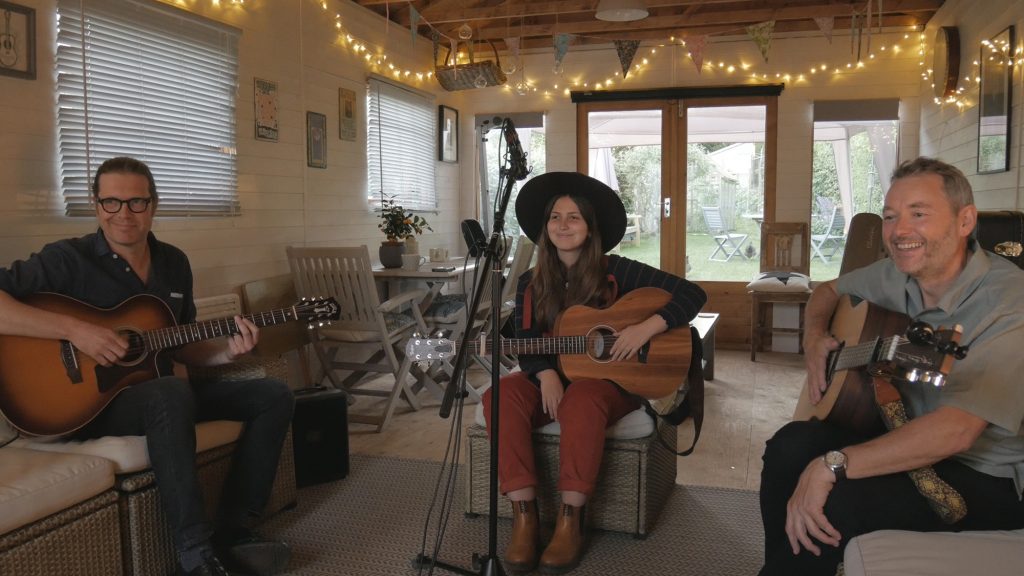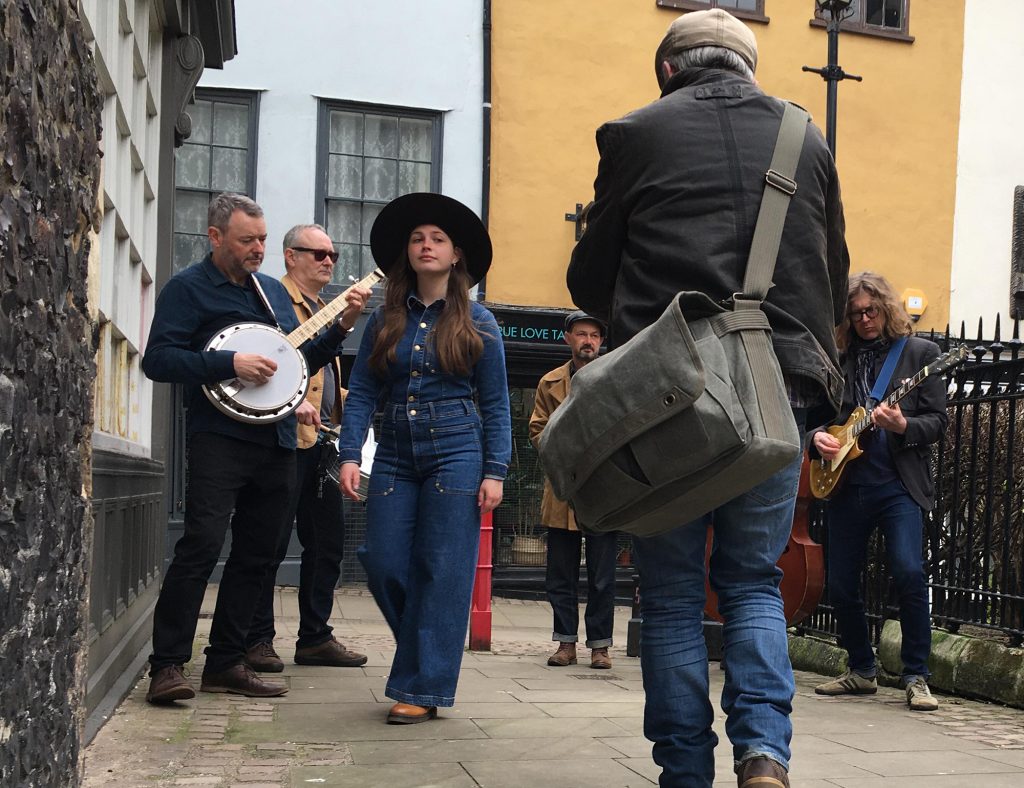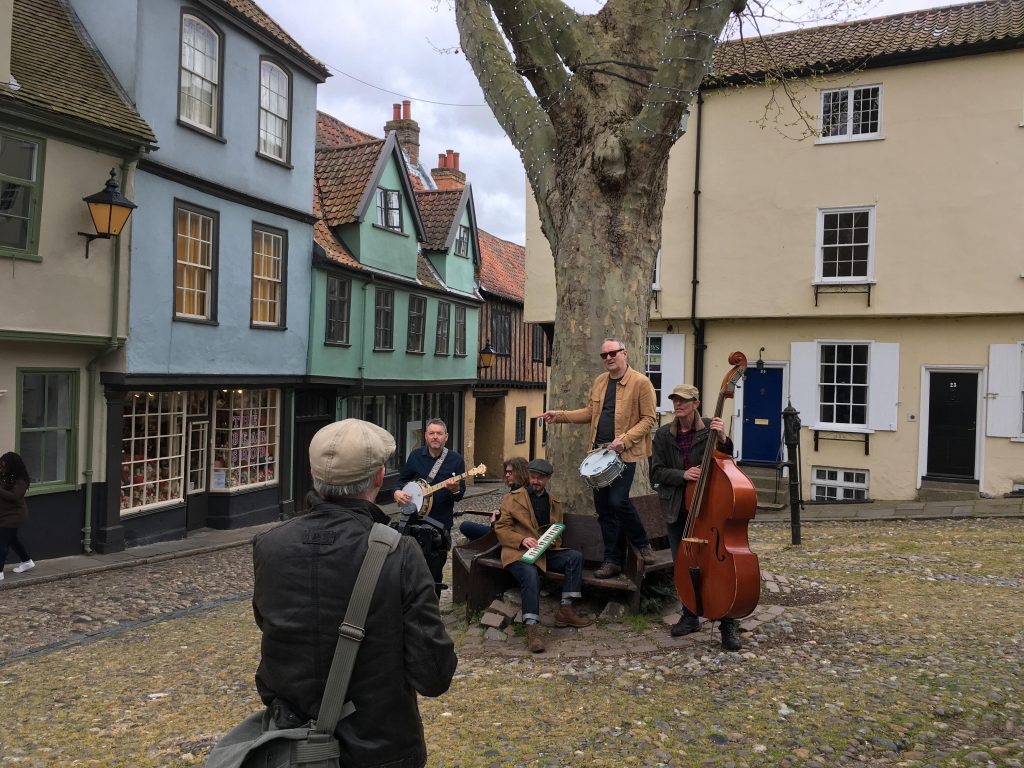
I’ve long been a fan of simple set ups for music recording, often using a mid-side pair only. That’s partly due to the fact that I like the idea of a stereo capture (rather than close-miced instruments and vocals panned across the left-right field), but also reflects the nature of what I do: location recording, with no studio and the natural tendency there – since the 1970s – to use multi-mic and multi-track recording, overdubbing and tinkering for as long as you wish. This is not to deny that there’s a hugely creative side to the typical studio recording approach, and it allows you to record instruments in ways just not possible without it. Of course, a simpler approach has remained the case with much recording of acoustic and classical music, although, even there, the number of spot mics can be vast these days. But recording of bands – with drum kits, electric guitars etc. – has been largely the province of the multi-mic and multi-track approach in recent decades, with only the occasional exception.
One such exception I have enjoyed has been John Cuniberti’s OneMic series of recordings. John is a hugely experienced engineer, with years of the studio multi-tracked approach under his belt, so it has been fascinating to see and hear his journey into a simpler approach: in his case using a stereo pair of ribbon mics, arranged as a Blumlein pair, in the form of the single stereo AEA R88. John has an excellent YouTube channel with examples of his recordings and videos, as well as behind-the-scenes videos, which are invaluable for others attempting something similar.
With a pair of the latest pre-production Rycote BD-10 fig 8 mics in hand, I was keen to try something in this vein: that is, to capture a whole band at the same time just with a Blumlein pair. Besides, what’s the point of a fig 8 mic without a good Blumlein work out? With a fraction of the skills and resources of a Cuniberti, expectations were much lower, but that’s not a reason not to have a go!
For anyone not familiar with the approach – which, like so much in stereo, goes back to the work of the brilliant engineer Alan Blumlein in the 1930s – a Blumlein pair comprises a pair of fig 8 mics usually arranged directly one above the other, so that the two mic capsules are angled at 90 degrees to each other: in that sense, like an XY pair. This gives you a stereo field in front of the mics and, with the rear lobes of the mics, to the rear: the stereo field to the rear, of course, is flipped. There’s plenty of signal at the sides of the pair, but it’s not the place for a direct sound source: at right-angles to the pair a source would be, say, on the left from the perspective of the front lobes, and on the right from the perspective of the rear lobes. Quite evidently, a recipe for a phasey mess. So, a Blumlein pair isn’t the answer to micing a group ranged in a circle around the mics, but does let you spread them in an arc of 70 degrees in front of the mic and a similar arc to the rear. Setting relative levels of different instruments and vocals is, needless to say, a question of adjusting loudness of the sources and/or distance from the Blumlein pair.
So much for the theory: the task is to translate that into action. With Lucy Grubb and her band willingly volunteering for the exercise, choice of venue was largely dictated by the need for good monitoring: with ‘mixing’ created in the setup, it was essential that the band and I could listen back and adjust the set up as necessary. The bassist, Kev Burton, happily let us use his studio – The Forge – where the band has previously recorded their multi-track releases: the wonderful Midas desk (originally made for Frank Zappa) was reduced to monitoring duties (from a passive split and feeding Logic), while the primary feed from the Blumlein pair was to my Sound Devices MixPre-3 recorder. Kev’s experience with his studio and the expert ears of the band were crucial to getting the balance right.
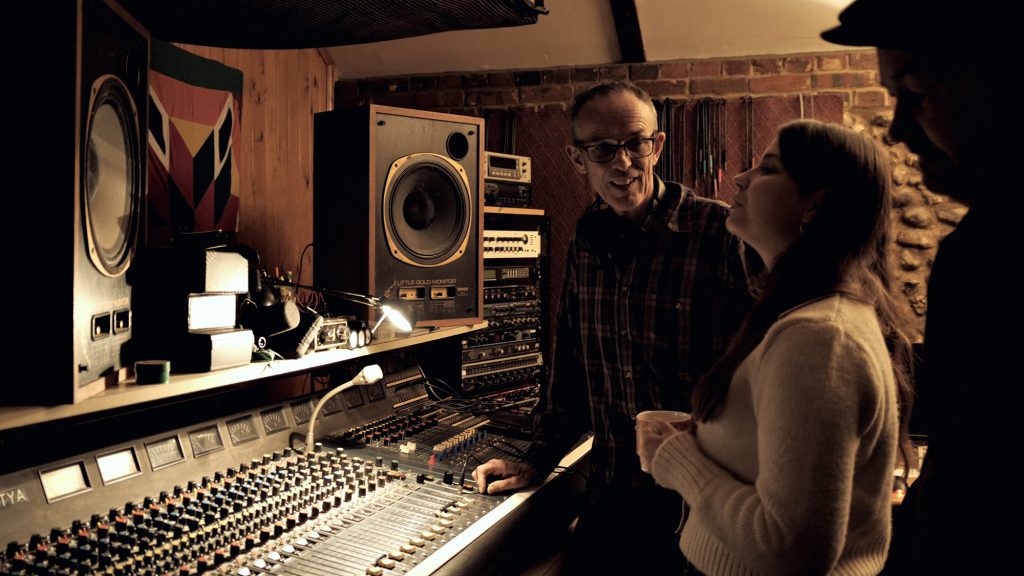
It was a tight squeeze in the small studio, with the hardest thing controlling the level of the drums, even with brushes and a special kick-drum beater: there was only so far we could move the drums away from the mics, so the drummer, Paul Weston, detuned his snare to great effect, and we put a gobo in front of the kit. The electric bass amp was placed on a chair in front of that (to get the bass central and nicely balanced with the kick drum), with Richard Poynton, on electric guitar and singing backing vocals, nearer the mic, and a little to one side. Closer to the mic, but centrally on the other side, was lead singer (and song-writer) Lucy Grubb, playing acoustic guitar (with a little amplification behind her). Left and right of her amp, were amps for Richard’s guitar and for the keyboard of Piers Hunt: all three were on chairs/beer crates to get them off the floor. Placement of the keyboard and the bass players themselves didn’t matter: it was all about the position (and volume) of their amps.
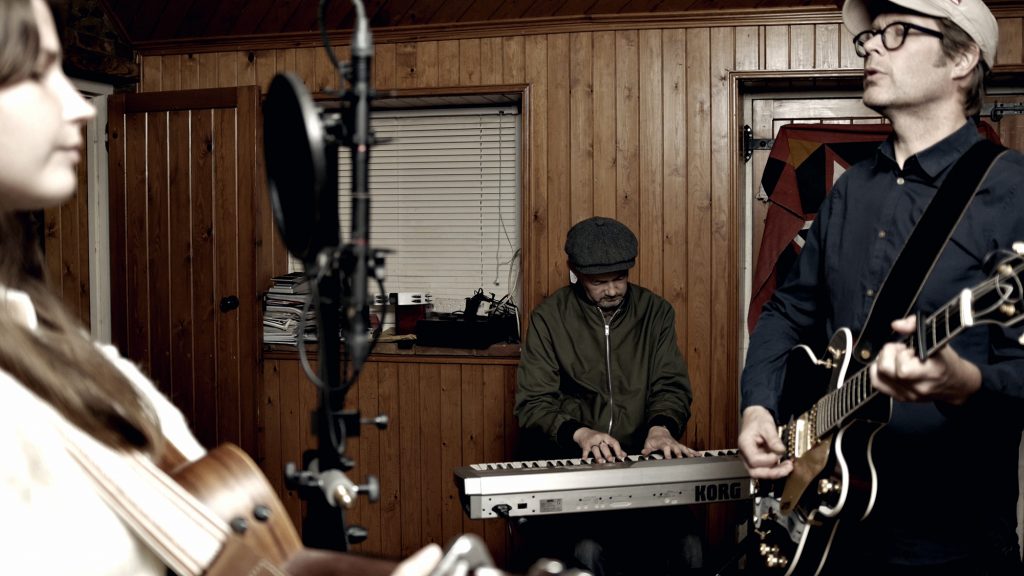
There was precious little room for any lights or cameras, but, nonetheless, a rough and ready film of the recording seemed worthwhile, so here – with a video of one of the three songs we recorded – is what I managed. The sound has seen no processing other than addition of a little reverb: there is no compression, EQ etc.
So the verdict? Well that’s one for others perhaps. But from my perspective and, more importantly, that of the band, what we got was a very faithful sound of the band in the room. Everyone was engaged in the idea of balancing or ‘mixing’ at source and I suspect we’ll be back having another go before long. Oh, and the BD-10s faired rather well as a Blumlein pair, I thought!


